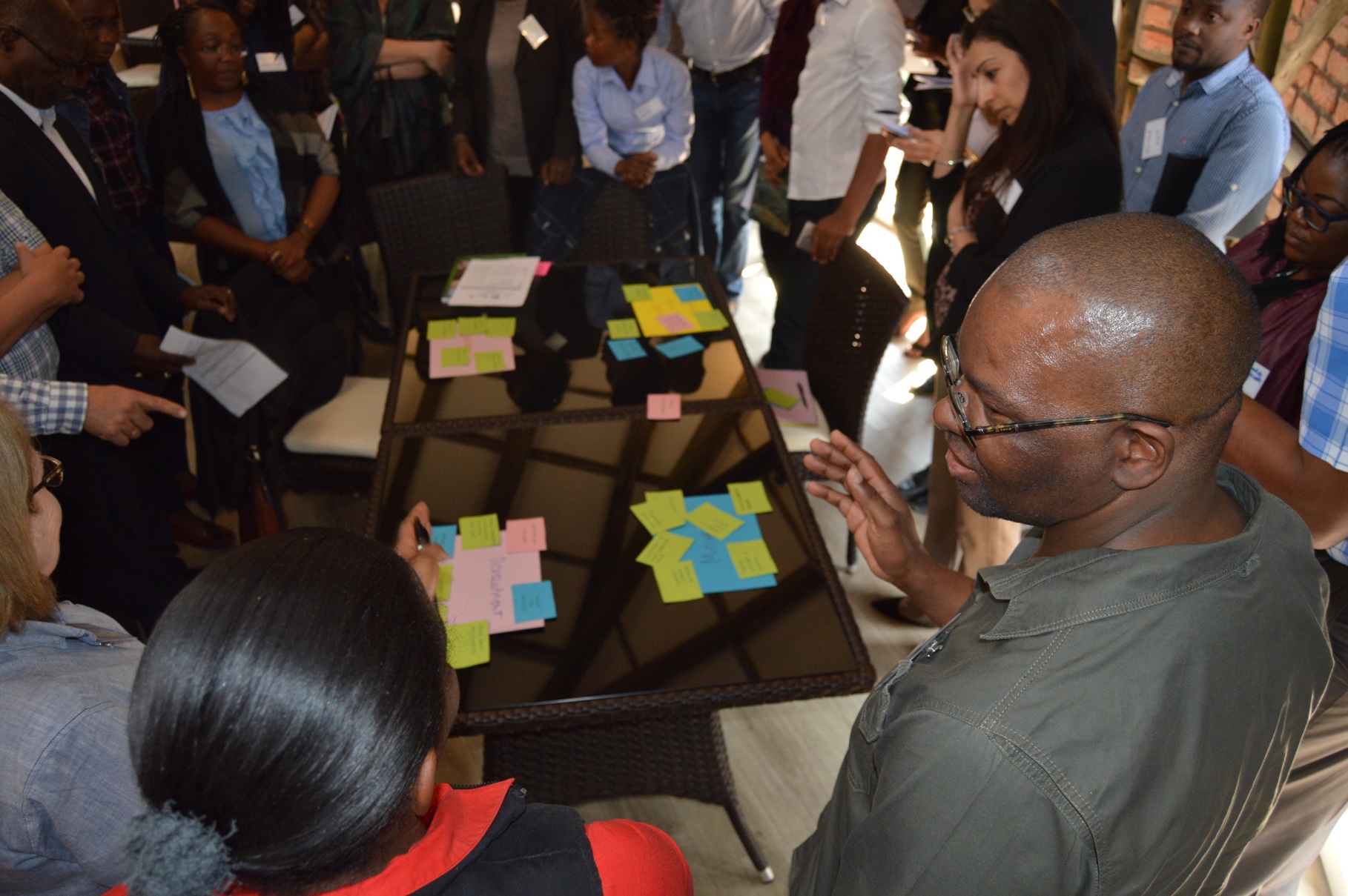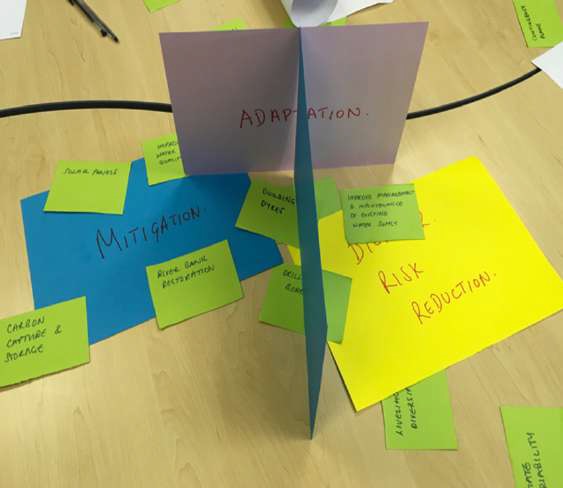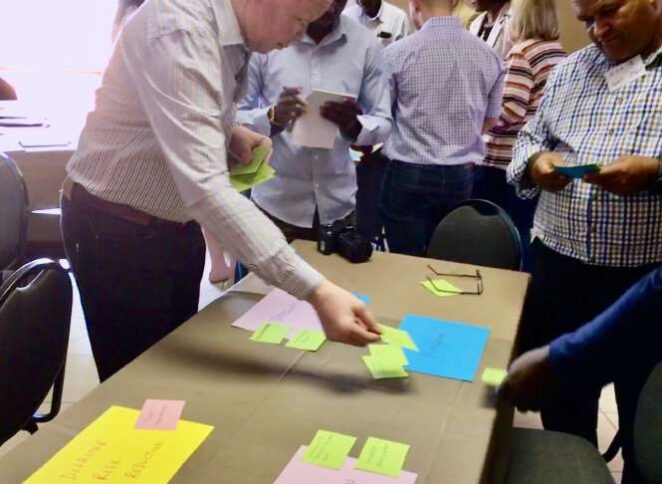Article /
“How-to” Guide: Co-exploring Terminologies

- Level: Introductory
- Time commitment: 1 hour
- Learning product: Guidance for delivering training
- Sector: Multi-sector
- Language: English
- Certificate available: No
Introduction
Terminology can be a barrier to understanding climate change, and to taking action. People who have limited interdisciplinary experience can easily misunderstand a number of terms, such as weather, climate, adaptation, mitigation, sustainable development, and disaster risk reduction.
A “level playing field” of knowledge about basic climate-related terminology among all participants sets the stage for more in-depth co-exploration and co-production (“transdisciplinary knowledge integration”) to support adaptation decision-making.
This brief explains:
- how to conduct a terminology co-exploration exercise for climate change adaptation decision-making.
- outlines the basics of the activity, explains the process, offers tips for success, and highlights potential pitfalls to avoid.
- provides an overview of two exercises: one that discusses weather and climate, and a second that discusses adaptation, mitigation, disaster risk reduction and development. Facilitators can run one after the other or concurrently (by splitting into two groups) if staffing allows.
For information on when and why this activity might add value to your work, refer to the companion “Explainer” Guide. Differential use of climate change terminology was particularly noted within the City of Cape Town as an impediment to moving forward with multidisciplinary climate change decisions within the City. Read this article to explore how they identified terminology discrepancies and came to a common meaning of terms.
*Download the full publication from the right-hand column. An outline of the guide is provided below. See the full text for more details.
The Activity
The basics

Objectives: Explore misunderstood or unfamiliar terms/language relating to weather, climate, adaptation, mitigation, development and disaster risk reduction.
Number of participants

Number of facilitators: Possible with one facilitator but easier with two facilitators.

Time: 30-40 minutes (depends on the number of terms discussed and whether exercises run concurrently or in rotation).

Skill level of facilitators: Facilitation skills ●●○○○; Familiarity with content and concepts ●●●○○

Resources: Coloured cards (large/smaller cards); marker pens; tables; (optional) timer to end exercise or change groups.
The Activity
Before the event
- Write concepts on large cards.
- Write descriptive statements or actions on smaller cards.
Set up and delivery
- Lay the large cards displaying “weather and climate” on the table. Distribute the smaller statement/action cards among the participants. Each participant should get a few cards.
- Ask participants to (5 mins):
- discuss the statements/actions on the smaller cards with another participant.
- discuss the question, “To which concept is the statement/action related and why?”
- place the smaller statement/action cards on the table alongside the concept.
- Once participants have placed all the smaller cards alongside concepts, ask the group to look at all the cards. Would anyone move any card? Allow time for discussion. (5 mins)
- Explain the definition of concepts to participants. Ask again, would anyone move any card? Allow time for discussion. (5 mins)
- Ask participants for their reflections and learning. (5 mins)
- Conduct the same exercise for the “adaptation and mitigation” discussion. After differences have been discussed, co-benefits and trade-offs of potential actions can also be discussed.

The facilitator
The facilitator needs to:
- be familiar with the different concepts, statements and actions.
- know how and why these relate to one another.
- keep discussions focused.
- be aware that adding new terms from participants can broaden the discussion, but it can also be a distraction.
- be aware that discussing climate variables can be a good conversation starter, but it may also lead to more confusion among participants unless the right expertise is in the room.
The guide shares tables suggesting discussion points. We recommend tailoring discussions to your national/local/city context.
Pro tips
- At the start, ask participants to share any concepts or terms that they find unclear or confusing, or that they do not understand. If relevant integrate these concepts or terms to make the exercise more relevant to participants. When working through the exercise, participants may wish to add new examples. Facilitators should be aware that this can be a distraction to the learning objective.
- Bring out the links between the two exercises (“climate and weather”; “adaptation and mitigation”) where possible. Moving from one exercise to another should reinforce participants’ learning.
- Having a climate scientist on hand helps in explaining more about the types of climate information available, and in introducing climate variables (such as temperature, precipitation, humidity, rainfall intensity, and wind speed and direction), which can refer to both weather and climate, depending on the timescale. Including these can expand the discussion.
- Feel free to discuss additional concepts or terms, such as resilience, trends, climate projections and climate predictions.

This guide written by Elizabeth Daniels and Sukaina Bharwani from the Stockholm Environment Institute, in Oxford.
We are grateful to FRACTAL colleagues and partners for their input to this activity, namely Kornelia Iipinge (University of Namibia (UNAM) /City of Windhoek (CoW)), Olavi Makuti (CoW), Saima Haukelo (CoW) and Dr John Mfune (UNAM). The authors also thank FRACTAL colleagues and partners who supported in delivering this activity in multiple cities. Photo credits: Kornelia Iipinge (UNAM/CoW), Elizabeth Daniels (SEI), Sukaina Bharwani (SEI).
Suggested citation
Daniels, E., and Bharwani, S. (2020) “How-to” Guide: Co-exploring Terminologies. Transdisciplinary knowledge integration series “How-To” Guide #1. Stockholm Environment Institute, Oxford
Related Articles
- FRACTAL: Future Resilience for African Cities and Lands
- Explainer Guide: Co-exploring Terminologies
- Dialogue for decision-making: unpacking the ‘City Learning Lab’ approach
- Embracing the uncomfortable silences in climate information exchange
- Receptivity and judgement: expanding ways of knowing the climate to strengthen the resilience of cities
- Ensuring Future Water Security through Direct Potable Reuse in Windhoek, Namibia
- Inspiring Climate Action in African Cities
- Drought and its interactions in East Africa
- Bottom-Up Innovation for Adaptation Financing – New Approaches for Financing Adaptation Challenges
- Climate Change at the City Scale
- Towards developing a common language for climate change in the City of Cape Town
